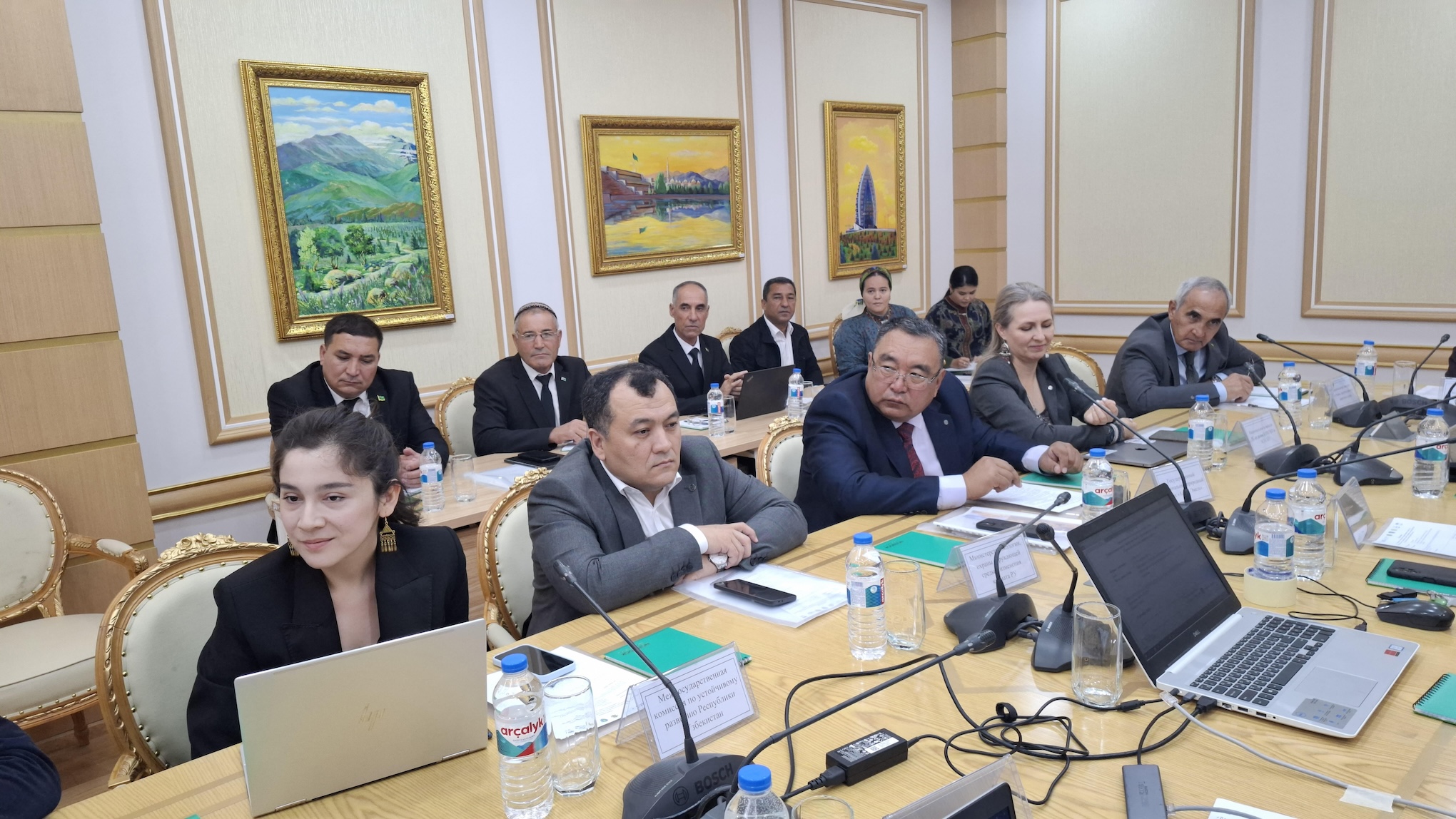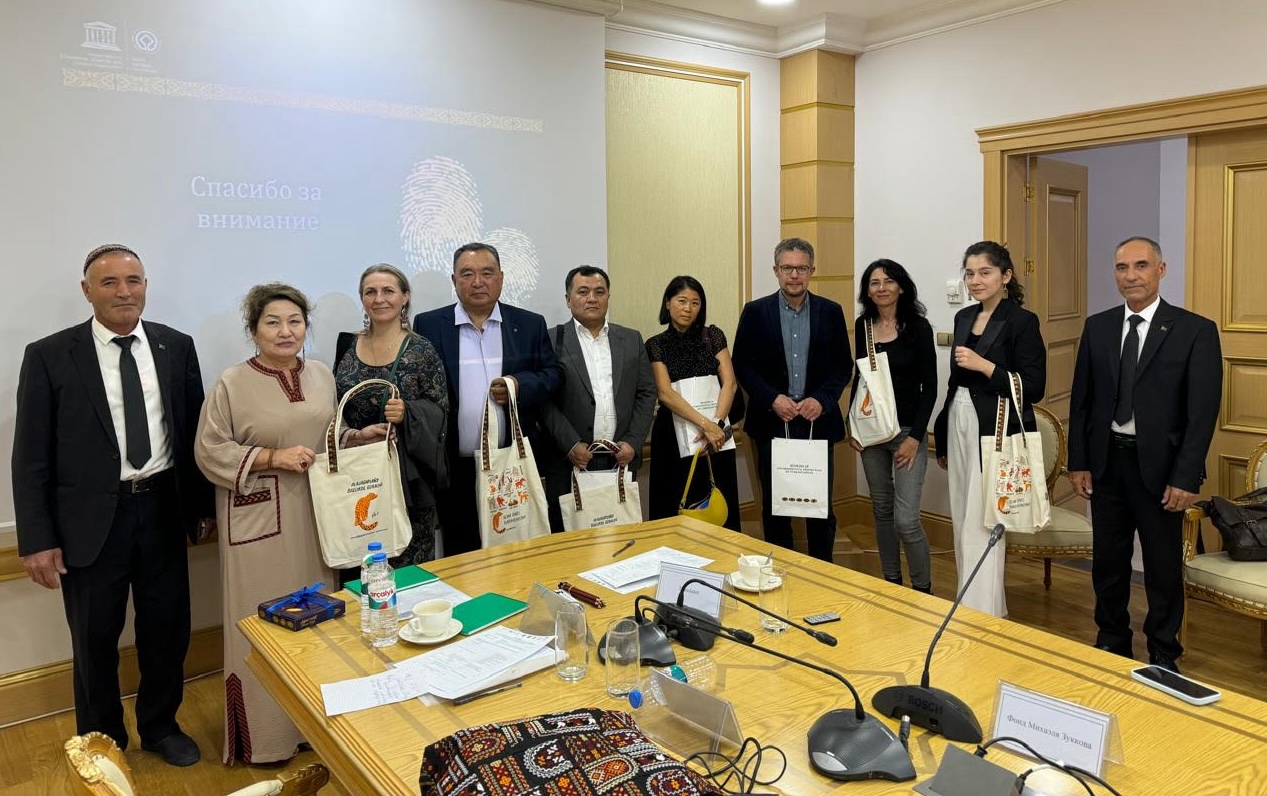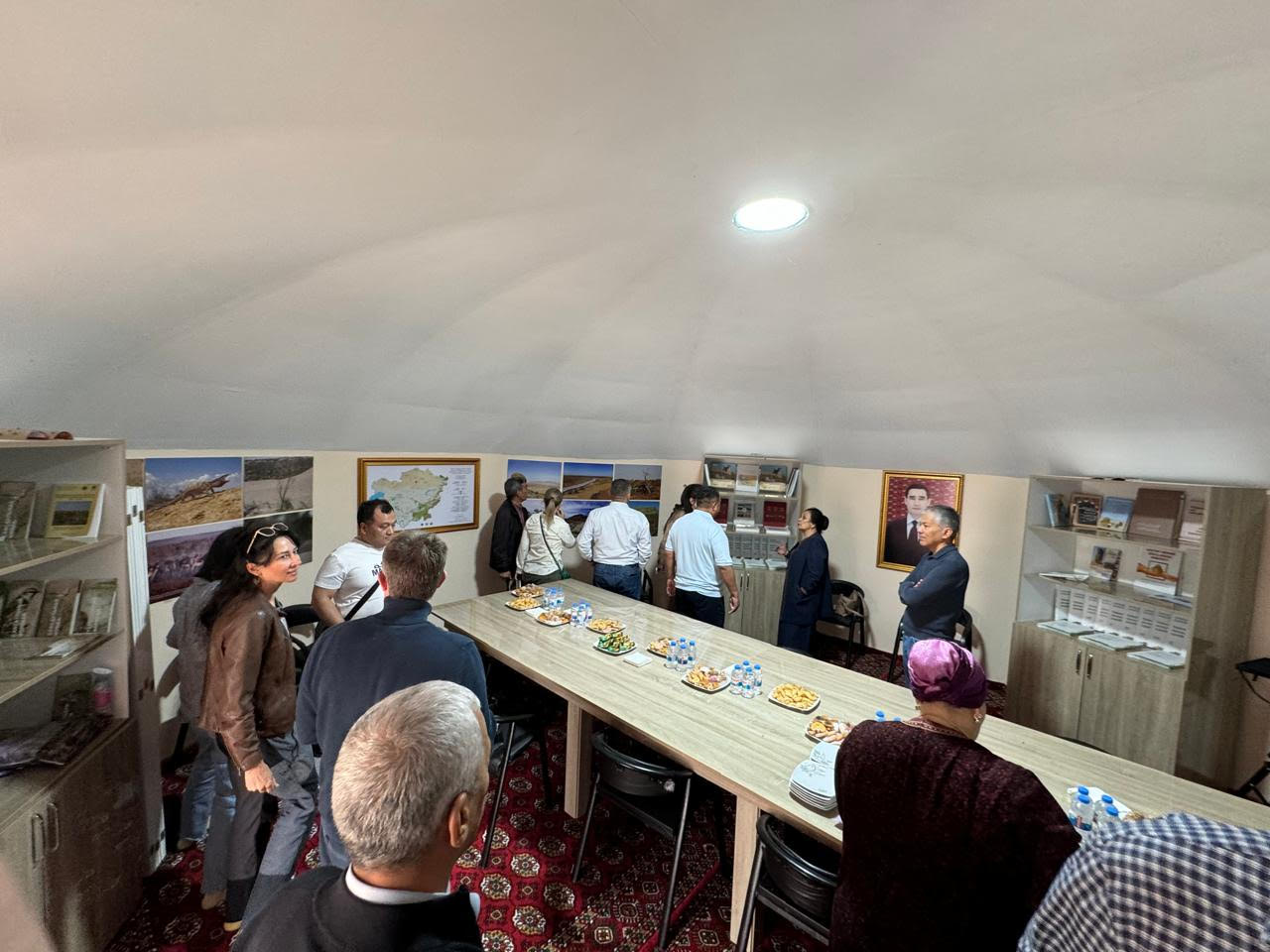Ashgabat, Turkmenistan, 17 October 2025 — The 2nd Meeting of the Regional Coordination Committee for the Serial Transnational UNESCO World Heritage Property “Cold Winter Deserts of Turan” was held in the conference hall of the Hydrometeorological Service of the Ministry of Environmental Protection of Turkmenistan. The meeting gathered representatives of the National Commissions for UNESCO of Kazakhstan, Turkmenistan, and Uzbekistan; the Ministry of Ecology and Natural Resources of the Republic of Kazakhstan; the Ministry of Ecology, Environmental Protection and Climate Change of the Republic of Uzbekistan; the Ministry of Environmental Protection of Turkmenistan; the National Institute of Deserts, Flora and Fauna of Turkmenistan; state nature reserves of Turkmenistan; the Michael Succow Foundation for Nature Conservation (Germany); and Conservation X Labs (USA).
As is well known, the desert reserves of Kazakhstan, Turkmenistan, and Uzbekistan received international recognition and were inscribed in September 2023 on the UNESCO World Heritage List as the Serial Transnational Property “Cold Winter Deserts of Turan.” In Turkmenistan, the sites include the Repetek State Biosphere Reserve, the Bereketli Garagum State Nature Reserve, and the Gaplangyr State Nature Reserve.
 Participants of the 2nd Meeting of the Regional Coordination Committee. Photocredit to organizers of the event.
Participants of the 2nd Meeting of the Regional Coordination Committee. Photocredit to organizers of the event.
To coordinate regional activities related to the management and conservation of this transboundary World Heritage property, a Regional Coordination Committee was established. The first meeting of the Committee was held online in 2024. The objective of the second meeting was to discuss the Terms of Reference of the Regional Coordination Committee, regional priorities and challenges faced by the three countries in managing the Cold Winter Deserts of Turan World Heritage property, as well as the preparation of a joint report to the UNESCO World Heritage Committee in accordance with the procedures of the Convention Concerning the Protection of the World Cultural and Natural Heritage.
During the meeting, participants heard reports on the progress and challenges in conserving the national components of the Cold Winter Deserts of Turan property and discussed regional cooperation priorities. Presentations were also made on the experience of the Michael Succow Foundation’s conservation projects in Central Asia. The Kazakh delegation shared its experience in managing another UNESCO World Heritage property, “Western Tien-Shan.” Participants thoroughly reviewed the draft Terms of Reference for the Regional Coordination Committee, discussing its structure, membership, functions, and the procedure for its formal adoption. Additionally, the meeting addressed the development of a concept for transnational management of the Cold Winter Deserts of Turan World Heritage property and the preparation of the next joint report to the UNESCO World Heritage Committee.
 Participants of the 2nd Meeting of the Regional Coordination Committee. Photocredit to organizers of the event.
Participants of the 2nd Meeting of the Regional Coordination Committee. Photocredit to organizers of the event.
On the second day, 18 October, participants visited the information and visitor centre located at the experimental site “Chalysh” of the Bereketli Garagum State Nature Reserve. The centre, established and equipped in 2021, operates entirely on solar energy. During the field visit, participants were introduced to the activities of the visitor centre and the ongoing scientific research of the reserve.
 Visit to the information and visitor centre at the experimental site “Chalysh” of the Bereketli Garagum State Nature Reserve. Photographs courtesy of the organizers.
Visit to the information and visitor centre at the experimental site “Chalysh” of the Bereketli Garagum State Nature Reserve. Photographs courtesy of the organizers.
Prepared by: Ms. Sh. Karryeva, Technical Advisor, Conservation X Labs
The event supports the achievement of:
| Priority Area of REP4SD No 5 dedicated to SDG 15: “Protect, restore and promote sustainable use of terrestrial ecosystems” |
| 5.2.3 development of ecological corridors for migratory species of animals and birds, transboundary cooperation on protection of key habitats, including protected areas; |
| Priority area No 6 of REP4SD dedicated to SDG 17: “Strengthen the means of implementation and revitalize the Global Partnership for Sustainable Development” |
| 6.5 Conducting joint activities for the protection and conservation of the UNESCO World Cultural and Natural Heritage Sites. |



